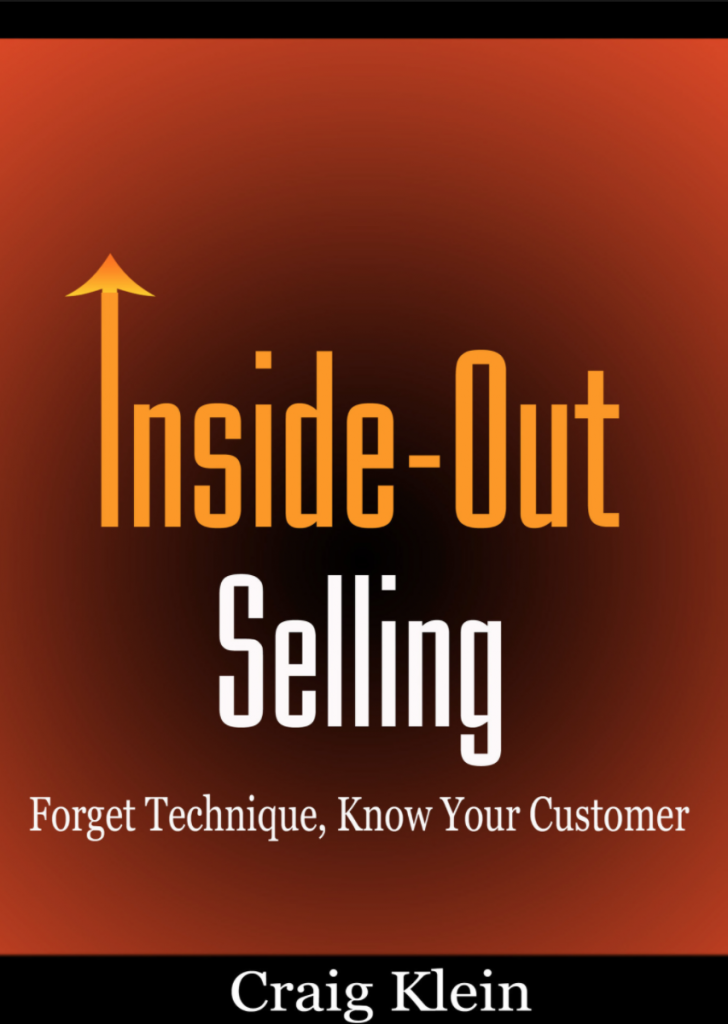
It’s easy for salespeople to see themselves as the conduit for all information instead of the sales CRM, marketing messages and other sources. Likewise, it is almost impossible for a salesperson to fully appreciate how much information the customer is presented with online and how that colors their perspective.
As a result, retargeting is a relatively new trend that has tremendous ability to skew the customer’s perspective.
Essentially, when a customer visits your competitor’s site, they begin to see the competitor’s ads showing up on completely unrelated websites they visit. So, when I visit a plumber’s website and later, at home, I’m researching vacation spots and that plumber’s ads are showing up.
Even a salesperson making outbound calls needs to be aware of the experience a buyer will have online as they research options and solutions and your brand. Much like in modern sales CRM, in traditional sales approaches, the salesperson is essentially the catalyst for the entire process. The customer is happily going about their business when they receive a call from a salesperson that asks questions that help them become aware that they have a problem or need.
It’s easy for salespeople to see themselves as the conduit for all information instead of the sales CRM, marketing messages and other sources.
How a Sales CRM Helps After the Call
Then they begin their own research process, after they finish the call with the salesperson. What will they find? Ask the prospect what other solutions they’ve looked at. Moreover, document those answers in the sales CRM. That way on the next call, you can test their interest in yours and other products by asking, “Are still looking at Brand X? Further, you can ask them what do you like about the product?”
In a business spending money on digital marketing, content marketing and generating “inbound” leads, often the process is designed so that the buyer goes from Awareness all the way to the Purchase phase online, without any interaction with sales. So, the salesperson can easily fall into the habit of assuming the customer has checked off all the other boxes. As mentioned earlier, that can be a big mistake.
It’s a good idea to ask questions about the process overall. For example, you may ask: “How did you find us?” or “What other solutions are you looking at?” Additionally, if neutral parties publish your product or service in buyer’s guides, you can suggest those. Offering objective resources like this builds trust.
Finally you may ask the following questions: “Have you purchased something like this before?” or “What worked?” Additionally, “What didn’t work?” or “Tell me about that experience?” And finally, “What would you do differently?” or “How long have you been researching solutions to this problem?”
Document those answers in the sales CRM.
Bottom Line

Buyers will have a tendency to make it seem as if yours is the first brand they’ve looked at and the one they are primarily interested in. And salespeople will have a tendency to assume it and believe it. So, develop a reflex to take a step backwards. As they say, “When it seems too good to be true, it probably is.”
In many businesses, the primary goal of the initial conversation with a prospect is to “disqualify” the prospect if possible. The salesperson’s time is very valuable to themselves and to the organization. Wasting time on prospects that are not ready to buy is to be avoided at all costs.
Define what makes a customer a “hot one”. Ask questions to identify those traits in every prospect and focus time on those that are most qualified. Document the answers to these questions in your sales CRM using simple drop down fields or check boxes. Develop systems and processes to nurture those that are unqualified.
Develop a reflex to take a step backwards. As they say, “When it seems too good to be true, it probably is.”
Exercise

Pick an innocuous topic and question each other about it, purposely lying. See if you can spot the “tells” below…
Verbal signs a person is lying:
- Qualifiers: not necessarily, but, however, almost, basically.
- Denials of lying: frankly, obviously, to be 100% honest with you, as far as I know.
- Speech errors: this is the old Freudian slip, changing your thoughts and details mid-stream. Pause-fillers: filling empty spaces with um, er, ah, uh.
- Stuttering: a liar gets tongue-tied, runs words together, stammers and slurs his speech.
Nonverbal signs of lying:
- Lip licking
- Lip puckering
- Increased drinking and swallowing
- Hand-to-face
- Sighs/deep breaths
- Hand and shoulder shrugs
- Handling objects
- Looking away to the side or down
- Crossing arms
- Closing hands into fists
This article has been excerpted from Inside-Out Selling, available on Amazon.com.
